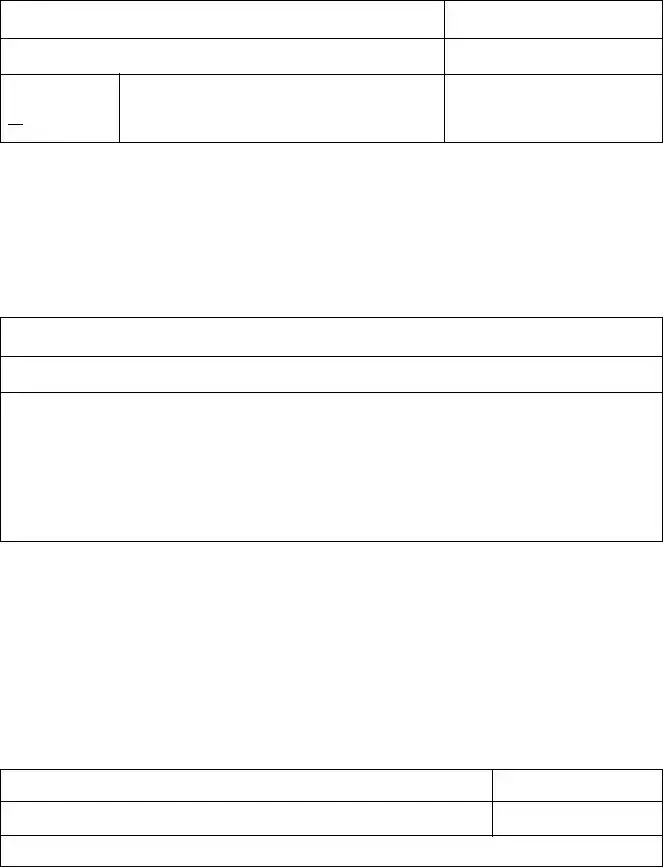ERS-210
Act 94/SLH 2010 (Rev. 9/2011)
INSTRUCTIONS FOR
DIRECT DEPOSIT AGREEMENT (FORM ERS-210)
In 2010, the Hawaii Legislature passed a law, effective April 1, 2011, requiring all retirees and beneficiaries of the Employees’ Retirement System of the State of Hawaii ("ERS") to designate a financial institution into which the ERS shall be authorized to deposit their ERS retirement benefits.
All portions of the Direct Deposit Agreement (Form ERS-210) must be completed in order for the form to be valid. In addition, if there is any alteration of this form, a new form must be completed. You must submit a new form if there are any changes to your account (i.e. account number, account holder, financial institution). The most recently dated form submitted to ERS will apply.
Section A – Deposit Authorization
By signing the Direct Deposit Agreement, you and all account holders authorize the ERS to automatically and directly deposit your ERS benefits to the Financial Institution named in Section B.
Section B – Account Information
The retiree or beneficiary’s name must appear on the account. You may ask the representative of the financial institution to help complete this section.
Section C – Agreements of All Account Holders
This section contains the agreements of everybody who is on the account, including the ERS retiree or beneficiary. The agreements in Section C apply to all Account Holders even if they are not the retiree or beneficiary receiving ERS benefits.
Section D – Signatures of All Account Holders
By signing the Direct Deposit Agreement, all of the Account Holders confirm that they understand and agree to the agreements in Section C.
The retiree or beneficiary signs as primary account holder. If the account is a joint account, please have all account holder(s) sign the form. Use an additional sheet if necessary. If you are representing the retiree or beneficiary, please ensure that you have any authorizing document(s) attached to the Direct Deposit Agreement (Form ERS-210).
Please attach a VOIDED check (Checking Account) or deposit slip (Savings Account) and return this form to the ERS.
If you have any questions, please contact the ERS at:
Oahu: |
|
(808) 586-1735 |
Toll Free from neighbor islands: |
1-(800) |
468-4644 Ext. 61735 |
Toll Free from mainland: |
1-(888) |
659-0708 |
ERS Website: |
http://www4.hawaii.gov/ers |
|
|
Mailing Address: |
Employees’ Retirement System |
|
|
|
201 Merchant Street, Suite 1400 |
|
|
|
Honolulu, HI 96813-2980 |
|
|
ERS-210
Act 94/SLH 2010 (Rev. 9/2011)
EMPLOYEES’ RETIREMENT SYSTEM OF THE STATE OF HAWAII
201 Merchant Street, Suite 1400
Honolulu, Hawaii 96813-2980
DIRECT DEPOSIT AGREEMENT
LAST Name:
FIRST Name:
Mailing
Address:
Check here if
new address
SSN:
Middle Initial:
Day Phone:
Effective April 1, 2011, Hawaii law requires all retirees and beneficiaries receiving benefits from the Employees' Retirement System of the State of Hawaii ("ERS") to designate a financial institution into which the ERS shall be authorized to deposit their ERS retirement benefits.
SECTION A – Deposit Authorization
By signing in Section D, I/We hereby authorize the Employees’ Retirement System of the State of Hawaii (“ERS”) to automatically and directly deposit my ERS benefits to my/our account at the financial institution named below (“Financial Institution”).
SECTION B -- Account Information (see your financial institution for help in completing this section)
Name of Account Holder(s):
Name of Financial Institution:
Routing Number: |
|
|
|
|
|
|
|
Account Number: |
|
□ Checking |
□ Savings |
|
|
|
|
Financial Institution Certification (Optional): |
|
|
|
Name of Agent: ________________________________________ |
Phone: ___________________ |
Signature: |
________________________________________ |
Date: _____________________ |
SECTION C – Agreements of All Account Holders
By signing in Section D, the Account Holder(s):
•Authorize the ERS to make withdrawals from my/our account in the event that the ERS benefits have been deposited to the account in error, e.g., overpayments.
•Consent to the disclosure by the Financial Institution to the ERS of any information that the ERS requests to effectuate, administer, or enforce the transactions authorized in Sections A, C, and D.
•Agree not to hold the ERS responsible for any delay or loss of funds due to incorrect or incomplete information supplied by me/us or by Financial Institution or due to an error on the part of Financial Institution in depositing funds to the account.
SECTION D – Signatures of All Account Holders
Authorized Signature (Primary): |
Date: |
Please attach a VOIDED check (Checking Account) or deposit slip (Savings Account) and return this form to the ERS.
